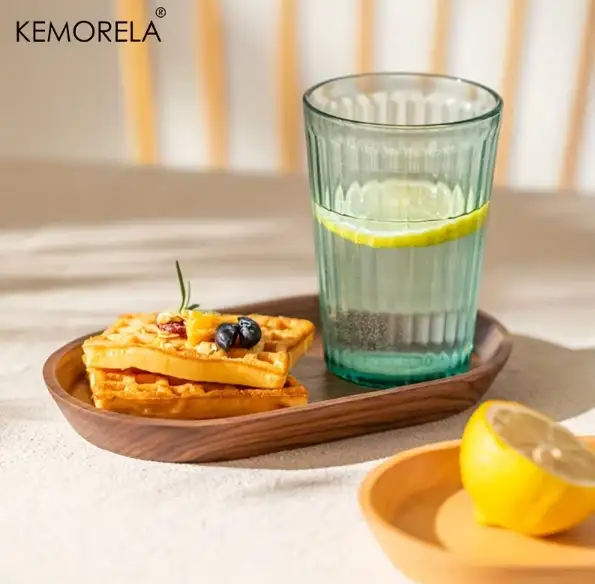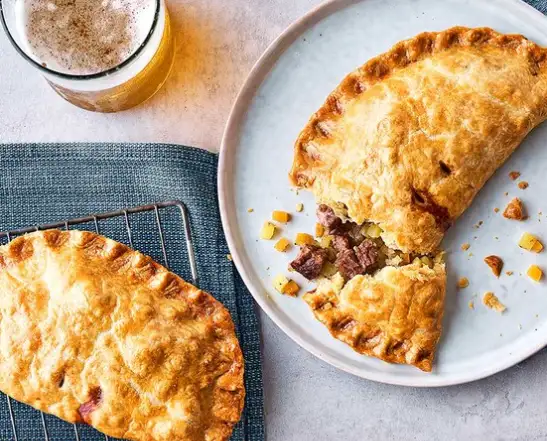If you’re a food lover who enjoys baked treats, you might have stumbled across the terms pasty and pastry. Despite their similar spellings, they refer to two entirely different culinary delights.
Let’s clear up the confusion and explore the unique identities of each.
What is a Pasty?
A pasty (pronounced “pass-tee,” rhyming with “nasty”) is a savory handheld pie, most famously associated with Cornwall, England.
It was originally a miner’s meal, designed to be hearty, portable, and mess-free.
Traditional Cornish pasties are filled with a mixture of meat, potatoes, onions, and sometimes turnips, all encased in a thick, crimped crust.
Key Characteristics of a Pasty
- Origin: Cornwall, England, though variations exist worldwide.
- Filling: Usually savory, such as meat and vegetables.
- Shape: A semi-circular or D-shape with a crimped edge for easy handling.
- Purpose: A practical meal for workers, now enjoyed as a regional delicacy.
Modern Pasties
In the U.S., pasties are popular in regions with strong mining histories. They’re often compared to empanadas or turnovers but are typically larger and more rustic.
What is a Pastry?
The term pastry encompasses a wide variety of baked goods made with flour, fat, and sometimes sugar. Pastries can be sweet or savory, but they are often associated with delicate, flaky treats.
Think croissants, danishes, or tarts—pastries are the stars of bakeries worldwide.
Add a touch of elegance to your dining experience with the Plum Blossom Small Plate (14cm)—perfect for serving desserts, sauces, or even mini pastries, this ceramic tableware combines French-inspired cool colors with a gradual design that elevates any meal presentation.

Key Characteristics of Pastries
- Category: A broad term for baked goods made with dough.
- Types: Includes sweet items like éclairs and savory options like quiches.
- Texture: Often light, flaky, and buttery.
- Examples: Croissants, bear claws, danishes, and pie crusts.
In the U.S., pastries are staples in breakfast menus, often paired with coffee. They may feature fillings like fruits, nuts, or cheese and are finished with glazes or powdered sugar.
Why the Confusion?
The similarity in spelling and shared culinary roots often lead to mix-ups. Both words stem from the Old French word paste (meaning dough), which evolved into two distinct branches:
- Pastry developed as a general term for dough-based baked goods.
- Pasty became a specific savory dish with regional significance.
Adding to the confusion, the plural form of pasty (pasties) sounds similar to other English terms, such as “paste” or even decorative “pasties” used in burlesque performances.
How to Remember the Difference
Here’s a quick mnemonic:
- Pasty: Think practical pie. It’s a functional, savory handheld meal.
- Pastry: Think pretty treat. These are elegant, often sweet delights.
FAQs About Pasties and Pastries
1. Are pasties and pastries the same thing?
No. Pasties are savory pies, while pastries refer to a wide range of baked goods, often sweet and flaky.
2. Can a pasty be sweet?
While traditional pasties are savory, modern versions sometimes include sweet fillings. However, they remain distinct from pastries due to their robust crust and design.
3. What’s the best way to enjoy a pasty or pastry?
- Pasty: Warm, often as a lunch or dinner item. Pair with a light soup or salad.
- Pastry: Freshly baked, typically enjoyed with coffee or tea, often as breakfast or dessert.
Conclusion
While a pasty and a pastry may sound alike, they cater to very different culinary cravings.
A pasty satisfies your hunger with its hearty, savory filling, while a pastry delights your sweet tooth with its light and flaky texture.
Whether you’re grabbing a quick meal or indulging in a bakery treat, knowing the difference ensures you’ll always order just what you’re craving.
Enjoy exploring these delicious baked goods and impress your friends with your newfound knowledge!”Elevate your dining experience with the Plum Blossom Small Plate (14cm)—a stylish ceramic dish perfect for serving sauces, desserts, or small bites, blending French elegance with vibrant colors to complement any table setting.

